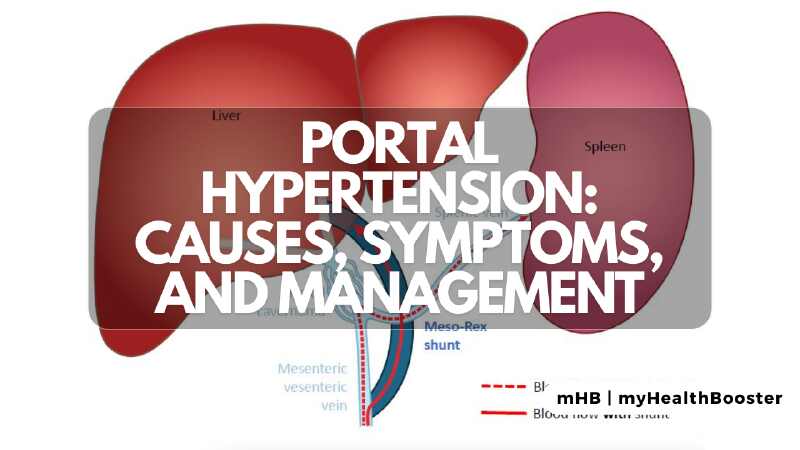What is Portal Hypertension?
Portal hypertension is a condition characterized by elevated pressure within the portal system, including the portal vein and its tributary veins. In this article, we’ll explore what happens during portal hypertension, its causes, symptoms, diagnosis, and various treatment options. Understanding this condition is crucial for those affected and healthcare professionals alike.
What Occurs During Portal Hypertension?
The liver, a vital organ in the body, requires a substantial blood supply to perform its multifaceted functions. The majority of this blood supply, about 75%, comes from the venous system through the portal system. Blood vessels from various organs converge to form the portal vein, delivering essential nutrients to the liver. Portal hypertension arises when pressure within this system increases, impacting liver function and causing symptoms associated with liver disease.
Causes of Portal Hypertension
Portal hypertension can be caused by intrahepatic, pre-hepatic, or post-hepatic factors.
Intrahepatic Causes:
- Cirrhosis
- Hepatic fibrosis or scarring
- Alcohol abuse
- Hepatitis B and C infections
- Fatty liver (NASH)
- Wilson’s disease
- Hemochromatosis
- Cystic fibrosis
- Primary sclerosing cholangitis
- Biliary atresia
- Parasite infections (e.g., schistosomiasis)
Pre-hepatic Causes:
- Portal vein thrombosis
- Congenital portal vein atresia
Post-hepatic Causes:
- Hepatic vein thrombosis
- Inferior vena cava thrombosis
- Restrictive pericarditis
Symptoms of Portal Hypertension
Symptoms arise from complications due to decreased blood flow through the liver and increased pressure in the veins where blood is shunted. Key symptoms include:
- Varices in the esophagus, stomach, umbilicus, anus, and rectum
- Life-threatening bleeding from esophageal and gastric varices
- Ascites (abnormal fluid collection in the peritoneum)
- Hepatic encephalopathy (confusion and lethargy)
- Splenomegaly (enlargement of the spleen)
Diagnosis of Portal Hypertension
Diagnosis typically occurs after a complication arises. Healthcare professionals confirm the condition through blood tests, X-rays, CT or MRI scans, and endoscopy. Pressures within the portal vein are measured in specific situations, such as during a TIPS procedure.
Treatment and Management
Treatment aims to prevent complications and includes addressing the underlying cause, avoiding alcohol, and restricting certain medications. Dietary adjustments, medications like beta-blockers and nitroglycerin, and endoscopic procedures to manage varices are common approaches. The TIPS procedure may be considered to decrease portal system pressure. In severe cases, liver transplantation might be necessary.
Complications and Prognosis
The complications of portal hypertension mirror those of liver failure, including bleeding, ascites, and hepatic encephalopathy. Survival rates depend on the extent of liver function, with compliance to dietary restrictions and abstinence from alcohol playing pivotal roles.
Prevention
While certain causes like genetic factors and congenital anomalies may be unavoidable, prevention is possible for liver diseases linked to alcohol and drug abuse. Chronic alcoholism and IV drug abuse can lead to cirrhosis and portal hypertension, making lifestyle changes crucial for prevention.
Prognosis
Portal hypertension is a manageable complication of underlying liver disease. Survival rates are higher with maintained liver function, emphasizing the importance of adherence to recommended treatments and lifestyle adjustments.
Conclusion
Understanding portal hypertension is essential for those affected and their caregivers. By unraveling its causes, symptoms, and available treatments, individuals can navigate this condition with informed decision-making and proactive healthcare management. Regular consultations with healthcare professionals are crucial for effective monitoring and tailored care plans.
